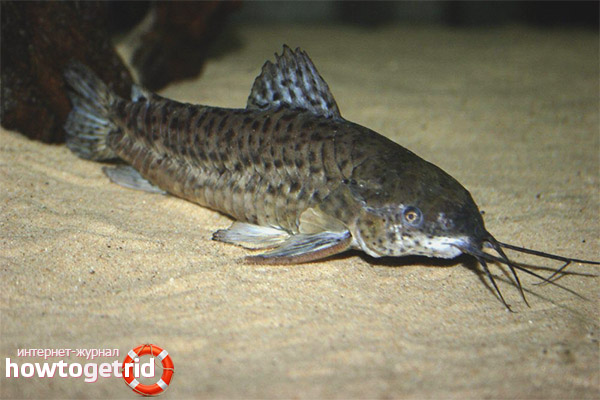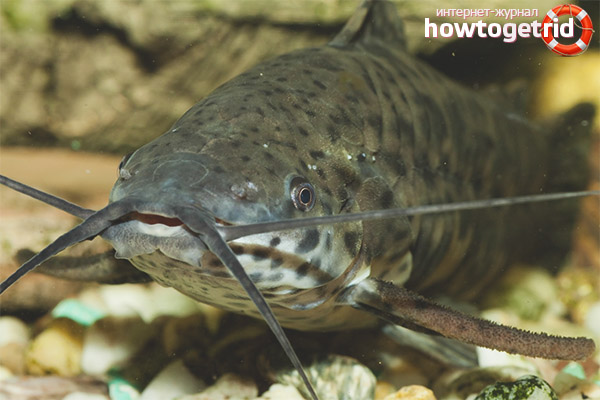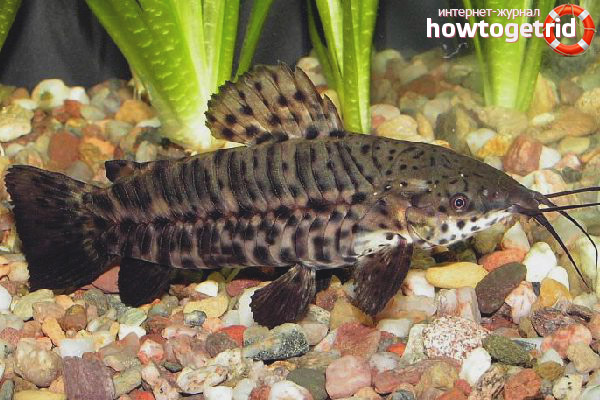The content of the article
Catfish are very popular among aquarists. They began to be kept in aquariums for quite some time. A lot of lovers of these interesting fish today. This is not to say that catfish are the most beautiful of all aquarium fish. But among them there is one very attractive fish - catfish tarakatum.
Takakatuma is also called Hoplosternum ordinary. In Latin, the name sounds like Hoplosternum thoracatum. Previously, these catfishes were assigned to one species, until studies were carried out more carefully. Dr. Roberto Reis studied the genus in 1997. It was he who came to the conclusion that the genus Hoplosternum must be divided. The name Hoplosternum thoracatum was replaced by Megalechis thoracata. Despite this, in Russia, representatives of the species are called the catfish tarakatum in the old fashioned way.
Description
These fish have a brown color of a light shade. There are dark spots throughout the body, as well as on the fins. They appear in the process of fish growth and remain in adults. Young fish differ from older ones in that the color becomes darker with age. It is noteworthy that with the onset of spawning, the male’s abdomen becomes bluish; in the rest of the period, it is painted white. At the same time, the color of the abdomen in females remains white constantly. These catfish, if properly maintained, can live 5 years or longer.
Gender differences
Living in nature
The natural habitat of the taracatum catfish is the Amazon. Basically, they live in its northern part. Individuals have also been found in Florida and on the island of Trinidad. This is due to the fact that some aquarists simply released them, where the fish bred.
Content
Representatives of this species prefer to live in warm waters. Therefore, the temperature is recommended to be maintained within 25-28 degrees. There are no special requirements for other water parameters. This is due to the fact that in nature tarakatums are adapted not only to soft, but also to hard water. The pH level may also be different. In addition, catfish taracatum can live in water with different salt contents.
In these fish, the intestines are arranged in a special way. Due to this, they are able to breathe air on the surface of the water. Sometimes the fish rise to the surface to inhale. Before jumping, catfish accelerates greatly. This should be considered when keeping aquarium content. To prevent the fish from jumping out, the aquarium must not be left open. But, at the same time, this means that if only these fish live in the aquarium, then there is no need for a compressor and oxygen.
When keeping these catfishes, it is important to provide them with space. The bottom area should be as large as possible, and the aquarium should contain from 100 liters of water. The fish can grow to a considerable size. Adult representatives of the species reach 13-15 cm in length. In nature, catfish tarakatum lives in large schools. Sometimes one flock numbers several thousand individuals. It is not recommended to contain this species alone. You need to get at least 5-6 individuals. It is important that the male with such a flock was only one. If there are several, this will lead to a constant struggle for dominance. A stronger representative can kill others during the spawning season.
Also, when keeping it, it is important to consider that the fish are quite large, and there will be a lot of food to eat.After eating, a lot of waste remains in the water. Water should be replaced every week (fifth). It is also important to ensure water filtration.
Feeding
Since these catfish are quite large, they eat a lot of food. Today, there are a lot of special feeds that are designed specifically for catfish. Such food is quite suitable for a taracatum. For a change, it is sometimes recommended that they also be given live food. To ensure catfish receive protein, you can feed it with worms and bloodworms.
Compatibility
Som tarakatum, although it is quite large, it can quite coexist with many species of fish. Almost constantly, they are in the lower layer of the aquarium. With other catfish, this species coexists quite calmly.
Breeding

These catfish breed in a very unusual way, which is very different from the process of reproduction of catfish of other species. On the surface of the water, the male builds a nest of foam. A taracatum can build it for several days, carefully collecting pieces of vegetation. The result is a very large nest. In height, it is about 3 cm. The area of such a nest can occupy a third of the surface of the aquarium water. When a fish builds such a nest in nature, large leaves serve as a material for it. In the aquarium, you can put a flat piece of foam, under which the nest will be located. The material for the nest is bubbles. Somik releases them to hold the plants together. They are covered with mucus on top, so they will not burst for several days.
As soon as the nest is built, the catfish pursues the female, who will swim with him to the built nest. She lays about 10 eggs in her fins, then puts them in a nest and swims away. After that, the male immediately swims up. It is located upside down and inseminates the eggs. From the gills, he releases several vesicles that fix the caviar. This process is repeated until catfish lay all their eggs. There can be a lot of eggs. One female lays 500-1000 pieces. When the process is completed, the female can be deposited in another container. If there are still females in the spawning grounds who are ready to lay eggs, spawning may occur again. The male remains near the nest and protects it very violently. He will attack absolutely everything that will approach.
During this period, the male can not be fed. He will not eat while protecting the nest. If the nest begins to partially collapse, it will add foam. He will return fallen eggs back. But if the eggs fall to the bottom, they can hatch there.
She will hatch in about 4 days. The temperature should be 27 degrees. After this, the male is precipitated. A hungry catfish can eat it. A larva emerges in a day or a little more and swims to the bottom. After a day, you can give the fry a small feed. They grow quickly, in two months they will reach 3-4 cm in length. After that, they can be fed with adult food. Fry can be grown up to 300 at a time. Therefore, you should stock up on containers in advance to sort them by size. These fish are in great demand, so there should be no problem with where to put the grown fry, which turned out to be so many. If the aquarist is faced with the problem of marketing fry, then he can be congratulated - the breeding process was a success. He raised beautiful interesting fish.
Video: aquarium fish catfish tarakatum











Submit